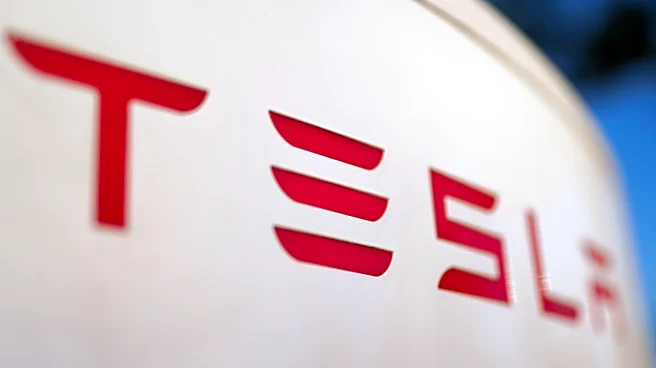What's Happening?
Federal auto safety regulators have launched another investigation into Tesla's Full Self-Driving (FSD) technology after reports of vehicles running red lights and driving on the wrong side of the road. The National Highway Traffic Safety Administration (NHTSA) is examining 58 incidents involving traffic violations and crashes, covering nearly 2.9 million Tesla vehicles equipped with FSD. This investigation follows previous probes into Tesla's driver-assistance features, including issues with crash reporting and a 'summon' technology. Tesla asserts that its FSD system requires driver supervision, despite its name suggesting full autonomy.
Why It's Important?
The investigation is crucial as it questions the safety and effectiveness of Tesla's FSD technology, potentially leading to recalls and affecting Tesla's plans for autonomous vehicle deployment. The scrutiny impacts Tesla's reputation and stock market performance, as safety concerns could deter consumers and investors. The outcome may influence regulatory standards for autonomous driving technologies, affecting the automotive industry's approach to innovation and safety.
What's Next?
The NHTSA's investigation could result in regulatory actions, such as recalls or requirements for Tesla to enhance its FSD system. Tesla may need to address these safety concerns publicly and possibly in legal settings. The company is under pressure to demonstrate the reliability of its technology, which could affect its business strategies and technological advancements. Stakeholders, including investors and consumers, will be closely watching the developments.
Beyond the Headlines
The investigation highlights ethical considerations in deploying autonomous technologies without adequate safety assurances. It underscores the balance between innovation and public safety, as companies like Tesla push boundaries in self-driving technology. The case emphasizes the role of regulatory oversight in ensuring that technological advancements do not compromise safety standards.











